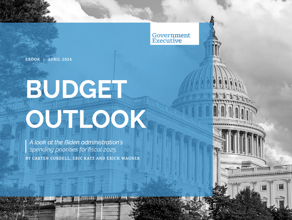Annals of the Security State, Presidential-Vacations Edition
Protecting modern presidents is a legitimate and crucial goal. Here is some of what it ends up meaning in practice.
I believe I am the only amateur pilot who’s a Democrat. Okay, I'm exaggerating. I can think of four others. No, five! Therefore when people in the aviation community talk about the effect of “Presidential TFRs”—the 30-mile-radius no-fly zones, known as Temporary Flight Restrictions, that travel with a president wherever he is—they often begin by saying, “Welcome to Obama's America ...” or “That idiot Obama has done it again...” The complaints started some other way between 2001 and 2009.
Politics apart, I give you this account from someone who flies the same kind of small propeller airplane as I do, but who happens to live in the vicinity of the Clinton-and-Obama-preferred summer vacation site of Martha’s Vineyard. He originally posted this on a pilots’ private-discussion board but agreed to its reposting here. I've added a few explanations of aviation lingo in brackets, [like this]. This person, who uses his plane to fly himself on business trips, writes:
I just spent the last two weeks living with the presidential TFR on Martha’s Vineyard. I flew through the TFR nearly every day, commuting to work and with other activities. Unlike past years, I did it mostly VFR, IFR days excepting, of course. [VFR is Visual Flight Rules, the clear-sky conditions in which pilots set their own courses. Under IFR, Instrument Flight Rules, pilots file flight plans in advance and must follow controllers' instructions on course, altitude, etc.]
In the past years when the president was on the Vineyard, I filed IFR every day to go through the outer ring. [The farther-out part of the the 30-mile-radius space, where you need prior approval to fly. The inner ring, usually with 10-mile radius, is much more tightly controlled.] That’s a major PITA, especially when it’s clear skies.
This year, on the first day of the TFR, I phoned Cape Approach [local Air Traffic Controllers, or ATC] and talked to one of the controllers and asked him what was the best way from their perspective and he said just to call Cape Clearance from Chatham on the ground (CQX [Chatham airport] is untowered) and get a squawk code and that would be fine. [Squawk code is a four-digit code you enter in the plane's transponder, which lets controllers watching radar screens know which plane is which.] Cape Approach’s perspective was that if you are squawking a code and talking to them, you are fine in the outer ring ...
In the interest of caution and even though I had been given the guidance from Cape Approach, I diligently followed the NOTAM [Notice to Airmen, the equivalent of "now hear this" bulletins] and filed and activated a VFR flight plan every day from Foreflight [a popular and excellent iPad-based flight planning program] when flying VFR.
Some observations:
1. VFR flight plans are useless for the TFR. [A VFR flight plan is mainly useful as a search-and-rescue safeguard, so people know where you were intending to go and when, if you don't show up.] Boston Approach stated as much when he alluded to “entering you in the system” as I was picking up flight following on the way home one day. I told him I had a VFR flight plan open, if that saved him some work and he responded to the effect that it wasn’t enough. You need to be in “the system” [in the system = filing identifying info for the plane and pilot, along with intended route and timing for this specific flight, in the ATC system] and added “you don’t want to mess with them”....
2. Controllers get as nervous as we do. I wonder if there are Secret Service or others sitting in the ATC facility? ATC gets extremely nervous when the president is on the move. At one point, he left the Vineyard and went back to D.C. for a day and this started another TFR centered on Otis (FMH), and creates lots of uncertainty, since he is rarely on time and the TFR times drift. [The image at the top shows airspace when both TFRs are in effect.] I knew this was happening and planned to avoid the FMH inner 10 mile ring already. The controller was very jumpy, asked me my heading and told me he would advise. I let him know I was “direct GAILS [a GPS navigation point], if that helps” which kept me outside the ring. He said “Thank you” and never bothered me again, after an audible exhale.
3. Lots of pilots are clueless. At one point, ATC asked me if I had a visual on somebody low and slow, squawking 1200. [1200 is the transponder code for planes flying visually and not necessarily talking with controllers. Planes inside the TFR should not be using this code.] I never saw him, but I did see the flash of sunlight off the wings of the orbiting F-16’s from miles out as they turned to investigate. I never heard what happened. Lots of pilots stumble into the area unaware of the TFR. How can this be? There were too many forehead-smacking moments as I listened to the daily dance. We as pilots have to do better.
4. Actually going to the Vineyard (MVY) [MVY is Vineyard Haven airport, on the island] inside the inner ring is a “whole 'nuther thing”. Yesterday, we went to visit friends who were staying on the Vineyard, and rather than take the ferry for 90 minutes, I decided we would just fly. Made the reservation at Hyannis with the TSA, per the NOTAM and made the 4-minute flight to HYA from CQX [Chatham to Hyannis] for our “check.”
Wow, what an employment spectacle that was. We were directed to a holding area and a bus was sent to pick us up, after waiting in the plane for some time. The plane was fully unloaded of luggage and we and our bags were taken to a temporary screening area where the bags were searched by hand. We were all frisked/wanded. My plane was inspected by another person. I gave pertinent information to others seated with laptops, who were talking to ATC and passing the approvals on. Eventually, they determined that the duffel bags of lunches, sweatshirts, frisbees, and suntan lotion posed a low security risk.
An hour after landing, we were loaded back on the bus and dropped at the plane to repack it, and get started again for the 10-minute flight from HYA to MVY. [Hyannis to Vineyard Haven.] How to make a 15-minute flight into 2 hours? With the TSA, anything is possible. In the end, the screening experience left me disappointed that I had to go to such great lengths to fly my airplane within 10 miles of another fellow citizen on my way to the beach. We, as a nation, are very afraid of airplanes. Sigh.
5. ATC were great to work with throughout. They were absolute professionals.
6. The amount of hardware and manpower mobilized to support this vacation are incredible. I flew out of the Vineyard last night at 10pm after the TFR had been lifted and saw the exodus of all the supporting cast. Multiple C-5’s taking off for Andrews, two Ospreys, four F-16’s, Coast Guard and State Police helicopters, and more. It was breathtaking and concerning.
There are multiple businesses that are effectively shut down during the vacation TFR. There is a skydiving outfit at Marston Mills that is in the outer ring, along with some banner towing that stops operations. More impacted are the businesses on the Vineyard. The usual weekend line of planes landing for breakfast on the Vineyard are gone, for sure, but the biggest hit is the grass airfield at Katama. There is a great breakfast place there, bi-plane rides and across the road is the open beach of the Atlantic. Katama hosts dozens of planes on any given summer day. That entire thing shuts down. I wonder if the restaurant owners, bi-plane operator, skydiving businesses, FBO's etc. are compensated? It's a huge hit for these businesses at what is basically prime time of the summer vacation on Cape Cod.
Life on the Cape has returned to normal. Until next year.
There is a larger, stricter, and permanent version of these controls sitting over Washington, D.C. airspace all the time. Presidential campaign season is a nightmare for the air-traffic system, because rolling no-fly zones accompany the incumbent president (and sometimes smaller ones for challengers) during campaign travels. Here is what an Obama bus trip in the industrial Midwest did to airspace two years ago:

The big red circles in Michigan and Ohio were for currently active TFRs. The yellow circles were for ones about to go into effect. The big red one over D.C. is the permanent zone there. The little yellow one just above it is Camp David. Here is a post from a pilot who was flying at the time of that TFR.
I am not making a sweeping policy point here. As far as policy points go, anyone who knows the history of the 1960s understands that it is genuinely important to protect presidents from threat of mortal harm. (How would the history of that era differed if John F. Kennedy had stayed in office? Or a century earlier, if Abraham Lincoln had?) Anyone who knows America understands why Barack Obama has required even more protection than most of his predecessors. I am very glad the Secret Service has done its job as effectively as it has.
Instead this is offered as a specimen of the operating realities of our security state—many of which persist precisely because they don't come to public attention. Are these 60-mile-wide shutdowns the least obtrusive way of realizing the legitimate national goal of protecting a president? They seem excessive to me, though of course I'm biased. But the next time some president asks me for advice on where to summer, I'll suggest: Look for a place that won't snarl life and shut down business for millions of people who happen to live there. Maybe even a place like ... the outskirts of Waco ?
NEXT STORY: American Aid Worker Contracts Ebola





